
 A new study published Nov. 4, 2019, in the journal JAMA Internal Medicine details the first comprehensive look across the scientific literature at the role of mind-body therapies in addressing opioid-treated pain.
A new study published Nov. 4, 2019, in the journal JAMA Internal Medicine details the first comprehensive look across the scientific literature at the role of mind-body therapies in addressing opioid-treated pain.
The researchers found that certain mind-body therapies can reduce pain, as well as reduce opioid use, among patients treated with prescription opioids.
These findings are critical for medical and behavioral health professionals as they work with patients to determine the best and most effective treatments for pain.”
Eric Garland, lead author on the study explained that mind-body therapies focus on changing behavior and the function of the brain with the goal of improving quality of life and health.
Mind-body therapies include clinical use of meditation/mindfulness, hypnosis, relaxation, guided imagery, therapeutic suggestion and cognitive-behavioral therapy.
The researchers examined over 4,200 articles to identify 60 previously published randomized controlled trials on psychologically oriented mind-body therapies for opioid-treated pain.
The randomized controlled trials included in the study involved more than 6,400 study participants.
The research team looked at the type of pain experienced by the study participants, the type of mind-body therapy used and its effect on the severity of pain and the use or misuse of opioids.
They found that meditation/mindfulness, hypnosis, therapeutic suggestion and cognitive-behavioral therapy all demonstrated significant improvements in pain severity.
They also found that the majority of the meditation/mindfulness, therapeutic suggestion and cognitive-behavioral therapy studies showed improvements in opioid use or misuse. In contrast, two studies utilizing relaxation found significantly worsened results in opioid dosing.
Notably, mind-body therapies seem to be effective at reducing acute pain from medical procedures, as well as chronic pain.
The researchers highlighted this as an important finding, as mind-body therapies could be easily integrated into standard medical practice and could potentially prevent chronic use of opioids and opioid use disorder.
 Since mind-body therapies primarily use mental techniques and can continue to be utilized by patients after formal treatment, they may be more easily-accessible than other treatments.
Since mind-body therapies primarily use mental techniques and can continue to be utilized by patients after formal treatment, they may be more easily-accessible than other treatments.
The researchers also concluded that two of the mind-body therapies examined, meditation/mindfulness and cognitive-behavioral therapy, might have the highest clinical impact, since they are so widely accessible and affordable.
“A study published earlier this year projected that by 2025, some 82,000 Americans will die each year from opioid overdose,” said Garland.
“Our research suggests that mind-body therapies might help alleviate this crisis by reducing the amount of opioids to cope with pain. If doctors, nurses, social workers, policymakers, insurance companies and patients use this evidence as we make decisions, we can help stem the tide of the opioid epidemic.”
Reviewed by: Kate Anderton

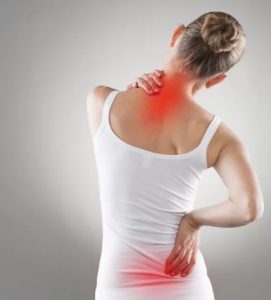 Hypnosis can reduce pain by up to 42% and may offer a genuine alternative to painkillers, according to UK researchers.
Hypnosis can reduce pain by up to 42% and may offer a genuine alternative to painkillers, according to UK researchers.
They said their findings suggest that hypnotic intervention could deliver “meaningful pain relief for most people” and, therefore, may be an “effective and safe alternative” to drug intervention.
The analysis, led by psychologist Dr Trevor Thompson from the University of Greenwich, found that hypnosis was more effective with people who are especially amenable to suggestion. “This is by far the largest review of its kind and presents very compelling evidence”.
However, it also found that those who were moderately suggestible – essentially most people – saw a 29% drop in pain after hypnosis.
Data was used from 85 studies across 14 countries, with a total of 3,632 people subjected to different forms of pain stimulation including extreme cold, heat,  pressure, exercise and even lasers.
pressure, exercise and even lasers.
People typically rated the pain they felt as 5.5 on a scale of zero to 10, according to the study published in the journal of Neuroscience and Bio-behavioral Reviews.
According to the researchers, a five level of pain would significantly disrupt daily lives and have most people using medication.
Dr Thompson said: “This is by far the largest review of its kind, examining the effects of hypnosis in over 3,500 people, and presents very compelling evidence.
“About 15% of the population are highly receptive to hypnosis, and those people saw just over a 40% drop in pain,” he noted.
“Based on these findings, most people would experience around a 30% drop in pain or more, which is generally considered to be clinically meaningful pain relief,” he said.
Dr Thompson highlighted that the misuse of prescription painkillers such as codeine and fentanyl had increased massively over recent years and was a crisis in some countries, most notably the US.
 “Our findings suggest hypnosis could be a safe and effective alternative,” he said. “It can be administered quickly, cheaply and easily at home with a 20-minute audio recording.”
“Our findings suggest hypnosis could be a safe and effective alternative,” he said. “It can be administered quickly, cheaply and easily at home with a 20-minute audio recording.”
He added: “The next step is to extensively test hypnosis on people with chronic pain, such as back conditions, which people live with every day.
“Available data on this are not of a high enough quality or quantity,” he said. “We need to go and try this with people in their day-to-day lives.”
By: Nursing Times News Desk

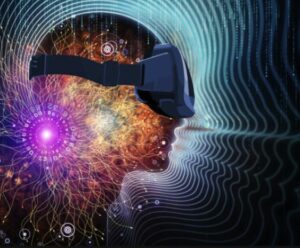 Virtual reality hypnosis (VRH) can reduce the need for postoperative opioids and anti-anxiety medications and lead to improved outcomes in children, new research suggests.
Virtual reality hypnosis (VRH) can reduce the need for postoperative opioids and anti-anxiety medications and lead to improved outcomes in children, new research suggests.
A team of anesthesiologists at the University of Texas Southwestern Medical Center and Hopitaux Universitaires de Strasbourg in France studied 21 children undergoing surgery for scoliosis, comparing 10 who received VRH in addition to the usual postoperative pain management to 11 children who did not receive VRH.
They found that the VRH group had significantly lower need for supplemental treatment for anxiety, opioid analgesics, and less incidence of vomiting as well as shorter time to urinary catheter removal and shorter time to getting up.
“Nonpharmacological approaches should play a critical role in treatment of perioperative anxiety and pain,” corresponding author Girish P. Joshi, MD, professor of anesthesiology and pain management, University of Texas Southwestern Medical Center, Dallas, told Medscape Medical News.
“This can be achieved through several approaches, including appropriate/adequate education and discussion, as well as use of novel technology,” he said. The study was presented at Anesthesiology 2018, the annual meeting of the American Society of Anesthesiologists in San Francisco.
Encouraging Findings
“Hypnosis and virtual reality (VR) have been shown to influence anxiety and chronic pain, but its role in acute pain, particularly in children, was not assessed previously,” Joshi said.
The aim of the current retrospective study was to evaluate the effects of VRH support on postoperative pain and opioids use in children undergoing scoliosis surgery.
From May 2017 onward, VRH support was added to the usual postoperative pain management in all pediatric patients, with a VRH session performed daily for 20 minutes during the first 72-hour postoperative period.
The control group consisted of children who had undergone the same procedure without VRH support before May 2017 and were demographically similar to the VRH group.
The researchers collected data regarding maximum postoperative pain scores per day, the total opioid dose, the number of postoperative vomiting episodes, request for supplemental treatment for pain and/or anxiety, time to oral intake, time to urinary catheter removal, time to getting up, and hospital length of stay.
The VRH group experienced several significant advantages over the control group:
- Only 20% of the VRH group required opioid medication, compared with 62.5% of the control group (P = .15)
- Only 37.5% of the VRH group required anti-anxiety medication, compared with 100% of the control group (P = .04)
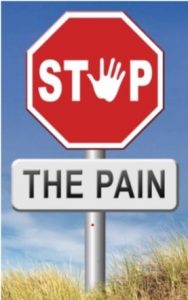 Total postoperative morphine consumption over the 72-hour period was almost twice as high in the control group vs the VRH group (2.15 mg/kg [1.11] vs 1.18 mg/kg [0.28] P = .015)
Total postoperative morphine consumption over the 72-hour period was almost twice as high in the control group vs the VRH group (2.15 mg/kg [1.11] vs 1.18 mg/kg [0.28] P = .015)- VRH group members were able to get up more quickly after surgery, compared to the control group (23 hours [3] vs 44 hours [16.02] P = 0.004)
- The VRH group experienced less postoperative vomiting, compared to the control group (40% vs 83.33%, P = .15)
- Time to catheter removal in the control group was twice that of the VRH group (40.95 hours [18.1] vs 20.14 hours [8.9] P = .03)
- There was no significant difference in average length of stay between the control and the VRH groups (137.7 hours vs 125.5 hours).
- “To our knowledge, this is the first study assessing the postoperative use of VRH in children,” the authors write. “These findings of this pilot study are encouraging.”
- Joshi emphasized that before this technology can be implemented in current routine clinical practice, more prospective, randomized controlled trials that are “adequately powered” are needed.
- Creative, Useful
- Commenting on the study for Medscape Medical News, David Spiegel, MD, Willson Professor in Medicine and Associate Chair of Psychiatry at Stanford University in California, said that although it was not a controlled trial, it was nevertheless “very compelling” and described VRH as “a very creative and useful technique.”
- “Particularly notable is that the children given the VRH used half the opioid dose,” pointed out Spiegel, who was not involved with the study.
- “These days, 133 people per day in the US are dying of opioid overdoses and the longer you stay on them [opioids] the more likely you are to become addicted, especially
 since these are children and not adults.”
since these are children and not adults.”
- “So anything that can reduce opioid consumption — both the amount and the length — is protective, and one way to look at VRH is that it seems to help and it sure doesn’t hurt,” he added.
- Spiegel noted that, as a group, children are more easily hypnotized than adults.
- He referenced a study that he and four colleagues conductedin 2005, in which children undergoing voiding cystourethrography, an invasive and painful procedure involving insertion of contrast dye into the bladder, were randomized to 2 groups: half received routine care, including hospital-provided recreation, while the other half received a hypnosis intervention.
- “We were able to reduce pain and distress and shorten the procedure time by 17 minutes in the hypnosis group,” he reported.
- The current study is “consistent with these findings, and the combination of VRH is interesting since VR helps to do technologically what one does phenomenologically in hypnosis — in other words, narrowing the focus of attention.”
- He hopes that the VRH study “sets a precedent for support like this for children routinely when they undergo procedures like this.”
- Joshi added that the Strasbourg group is contemplating a prospective study.
- “We are hoping other groups will also embark upon research similar to ours,” Joshi said.
- No source of funding for the discussed VRH study was disclosed by its authors in the original article. Joshi, study coauthors, and Spiegel have disclosed no relevant financial relationships.
- Anesthesiology 2018 from the American Society of Anesthesiologists: Abstract Presented October 14, 2018.
- For more from Medscape Neurology, join us on Twitter and Facebook
By: Batya Swift Yasgur, MA, LSW
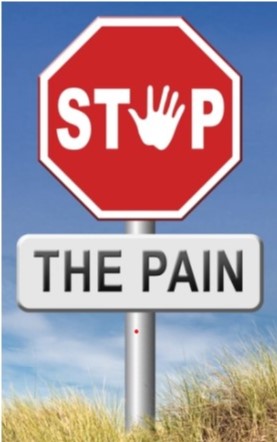
If you’re looking for a gentle way to reduce the pain that comes with chronic conditions like rheumatoid arthritis (RA) or osteoarthritis( OA), hypnosis may just do the trick. Studies show that more than 75% of people with arthritis and related diseases experience significant pain relief using hypnosis. Forget what you’ve seen in movies about hypnosis. Today’s practitioners are using it to give patients an additional tool to help manage their pain.
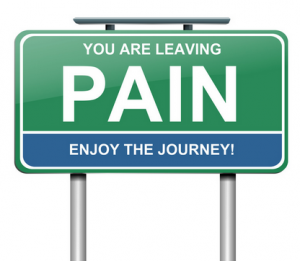 Learning to Relax with Hypnosis
Learning to Relax with Hypnosis
Hypnosis isn’t about convincing you that you don’t feel pain; it’s about helping you manage the fear and anxiety you feel related to that pain. It relaxes you, and it redirects your attention from the sensation of pain. In a hypnosis session, which usually lasts 10-20 minutes, you will likely start by focusing on your breathing to help you relax.
Then the hypnotist will instruct you to imagine a pleasant place and describe it in detail, refocusing your attention from something that triggers negative emotions to something that will activate positive emotions, such as being at the beach.
If your mind is off to the beach, and you’re imagining the warmth of the sun, the cool of the breeze, the sand at your feet, you’ll be less focused on your pain – and ready for the indirect suggestion of how to react to pain in the future.
It might sound something like this: “You will continue to feel this same sensation of pain, but you’ll be much less distressed about it, much calmer, much more at ease, not worried about it.”
Practice Makes Perfect
Hypnosis isn’t a one-shot treatment. At first, it can be part of regular psychotherapy sessions in a doctor’s office. Hypnosis typically helps 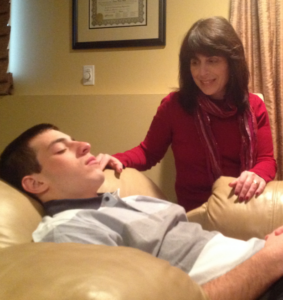 relieve pain in just 4 to 10 sessions. But some people benefit faster and others not at all. The goal is to teach patients the technique so they can use it on their own when pain strikes.
relieve pain in just 4 to 10 sessions. But some people benefit faster and others not at all. The goal is to teach patients the technique so they can use it on their own when pain strikes.
Some practitioners create recordings for patients that they can play to lead themselves into the hypnotic process. Some patients prefer to come up with their own script and not rely on a recording or the therapist’s voice to activate the process when pain strikes and they need it.
Learning hypnosis takes practice, and some people learn it more easily than others. Practice when you feel little or no pain; when you’re in a lot of pain, it can be harder to do.
Hypnosis Works for Children
Hypnosis is a tool you also can give a child to help him take control. When he feels pain, he can do something about it immediately without having to wait until mom gets there with the pills or for the pills to take effect. Having hypnosis as a tool also helps eliminate stress that comes from not having control.
For children, creating an active mental escape may be necessary. Rather than relaxing at the beach with a book, a child may want to imagine playing on the playground or kicking a soccer ball down the field.
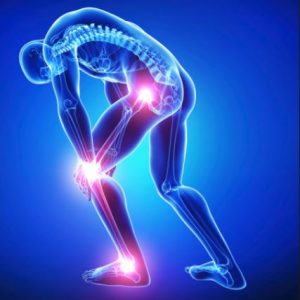 Is Hypnosis Right for You?
Is Hypnosis Right for You?
Some people respond to hypnosis better than others, but there’s no harm in trying it. It has no side effects and if it doesn’t work for you, you can stop at any time. But many people report significant reduction in pain and gain a simple tool for easing it that they can use any time.
To find a qualified hypnotherapist, ask your doctor for a referral or contact the Society for Clinical and Experimental Hypnosis or the American Society for Clinical Hypnosis. Health insurance may cover hypnosis for pain therapy performed by a medical or psychological professional. (By: Jenny Nash // Arthritis.org)

 Instead of pills and needles, hypnosis may ease the pain of surgery both during and after the procedure.
Instead of pills and needles, hypnosis may ease the pain of surgery both during and after the procedure.
According to a new study, women who received hypnosis before breast cancer surgery needed less anesthesia during the procedure, reported less pain afterward, needed less time in the operating room and had reduced costs.
“This helps women at a time when they could use help, and it has no side effects. It really only has side benefits,” said Guy Montgomery, lead author of the report and associate professor in the department of oncological sciences at Mount Sinai School of Medicine in New York City.
Montgomery hopes that the study, published online in the Aug. 28 issue of the Journal of the National Cancer Institute, will promote greater use of hypnosis in medical treatments.
Side effects such as pain, nausea and fatigue — both during and after breast cancer surgery — are commonplace. Previous research has suggested that hypnosis, a simple and inexpensive procedure, can help ease these problems. One small clinical study indicated that hypnosis was also effective for breast cancer patients about to undergo surgery.
For the new study, 200 women set for breast cancer surgery were randomly assigned to receive either 15 minutes of hypnosis with a psychologist or assigned to a group that simply spoke with a psychologist.
During the hypnosis session, the patients received suggestions for relaxation and pleasant imagery as well as advice on how to reduce pain, nausea and fatigue. They also received instructions on how to use hypnosis on their own.
They also received instructions on how to use hypnosis on their own.
The researchers found that women in the hypnosis group required less anesthesia and sedatives than patients in the control group, and also reported less pain, nausea, fatigue, discomfort and emotional upset after the surgery.
Those who received hypnosis also spent almost 11 minutes less time in surgery and had their surgical costs reduced by about $773, mainly as a result of the shorter time.
Although people think that hypnosis strips a person of control, it actually does just the opposite, said Dr. David Spiegel, author of an accompanying editorial in the journal and professor and associate chairman of psychiatry and behavioral sciences at Stanford University School of Medicine.
“This is something that empowers patients,” Spiegel explained. “If you’re fighting, you think you’re protecting yourself, but, actually, you’re losing control, because you’re getting into a struggle with your own body. You can teach people to float instead of fighting. You get the body comfortable and think more clearly. The weird thing is it actually works. If thoughts can make the body worse, it follows that thoughts could actually make the body feel better.”
 Will hypnosis catch on with health-care providers?
Will hypnosis catch on with health-care providers?
“We have this in-built skepticism of what goes on in the brain and the mind, and the idea is that the only real intervention is a physical one. Yet what supposedly distinguishes us is this huge brain on top of our bodies,” Spiegel said. “It seems more scientific and desirable to give drugs than it does to talk to people and have them reorganize the way they’re managing their bodies.”
There are other obstacles. Many doctors find it more expedient to write a prescription than learn to perform hypnosis. Also, there’s no industry pushing the technique as there is with drugs, Spiegel said.
On the positive side, little investment is needed to get a hypnosis program going, Montgomery said. “A psychologist or nurse could get training in a short period of time,” he said. “It’s not that involved.”
Dr. Darlene Miltenburg, assistant professor of surgery at Texas A&M Health Science Center College of Medicine, called the new study “superb.”
“Anybody who has an open mind would realize that this treatment works and is scientifically proven. It’s not black magic,” Miltenburg said. “It’s real, and we do use it here. It’s very time consuming, that’s part of the problem, taking a pill is much easier. But just like many things in life, we want a quick fix rather than something that takes longer.”
To learn more, visit the National Center for Complementary and Alternative Medicine.
By: Amanda Gardner Healthday Reporter

 A new study published Nov. 4, 2019, in the journal JAMA Internal Medicine details the first comprehensive look across the scientific literature at the role of mind-body therapies in addressing opioid-treated pain.
A new study published Nov. 4, 2019, in the journal JAMA Internal Medicine details the first comprehensive look across the scientific literature at the role of mind-body therapies in addressing opioid-treated pain.
 Since mind-body therapies primarily use mental techniques and can continue to be utilized by patients after formal treatment, they may be more easily-accessible than other treatments.
Since mind-body therapies primarily use mental techniques and can continue to be utilized by patients after formal treatment, they may be more easily-accessible than other treatments.
 Hypnosis can reduce pain by up to 42% and may offer a genuine alternative to painkillers, according to UK researchers.
Hypnosis can reduce pain by up to 42% and may offer a genuine alternative to painkillers, according to UK researchers. pressure, exercise and even lasers.
pressure, exercise and even lasers. “Our findings suggest hypnosis could be a safe and effective alternative,” he said. “It can be administered quickly, cheaply and easily at home with a 20-minute audio recording.”
“Our findings suggest hypnosis could be a safe and effective alternative,” he said. “It can be administered quickly, cheaply and easily at home with a 20-minute audio recording.”
 Virtual reality hypnosis (VRH) can reduce the need for postoperative opioids and anti-anxiety medications and lead to improved outcomes in children, new research suggests.
Virtual reality hypnosis (VRH) can reduce the need for postoperative opioids and anti-anxiety medications and lead to improved outcomes in children, new research suggests.
 Total postoperative
Total postoperative  since these are children and not adults.”
since these are children and not adults.”
 Learning to Relax with Hypnosis
Learning to Relax with Hypnosis relieve pain in just 4 to 10 sessions. But some people benefit faster and others not at all. The goal is to teach patients the technique so they can use it on their own when pain strikes.
relieve pain in just 4 to 10 sessions. But some people benefit faster and others not at all. The goal is to teach patients the technique so they can use it on their own when pain strikes. Is Hypnosis Right for You?
Is Hypnosis Right for You?
 Instead of pills and needles, hypnosis may ease the pain of surgery both during and after the procedure.
Instead of pills and needles, hypnosis may ease the pain of surgery both during and after the procedure. They also received instructions on how to use hypnosis on their own.
They also received instructions on how to use hypnosis on their own. Will hypnosis catch on with health-care providers?
Will hypnosis catch on with health-care providers?







